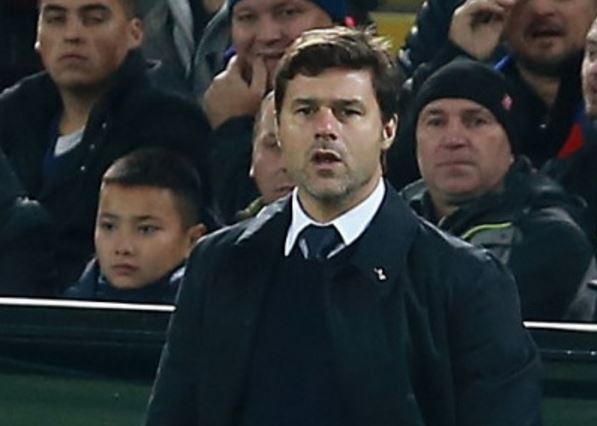Lineups
Tottenham Hotspur: (4-2-3-1): Lloris, Trippier, Sanchez, Vertonghen, Davies, Dier, Dembele, Son, Alli, Eriksen, Kane
Arsenal: (4-2-3-1): Cech, Bellerin, Mustafi, Koscielny, Monreal, Elneny, Xhaka, Mkhitaryan, Wilshere, Ozil, Aubameyang
Mauricio Pochettino stuck to his tried and tested formula and played the same team that defeated Manchester United and drew with Liverpool in the last couple of weeks. Arsenal, on the other hand, had to face with the injury blow of Aaron Ramsey and accordingly drafted Mohamed Elneny into the starting XI.
Major Tactical Themes
#1 Tottenham’s high line
Mauricio Pochettino’s men are known to press their opponents high up the pitch to regain the possession of the ball. However, against Arsenal, Pochettino applied a defensive line which was higher than usual. In the early parts of the game, Tottenham brought their defenders almost to Arsenal’s half. This meant that the Gunners were pegged back quite early on in the game.
Given Arsenal’s fragile defence, there was obvious pressure put on Wenger’s men and they subsequently gave the possession of the ball cheaply at times. Another objective that Pochettino achieved by playing a high defensive line was that his team caught Aubameyang offside on numerous occasions. The pacy forward likes to get behind the defenders but Tottenham tricked them by positioning themselves well and arranged the perfect offside trap.
#2 Arsenal changed their formation midway through the first half
With Aaron Ramsey sitting out Arsene Wenger tried to provide further defensive cover by bringing Mohammed Elneny into the starting XI. What looked like an initial 4-3-2-1 with Wilshere playing on the left of the midfield three, changed into a 4-2-3-1 pretty quickly. Spurs’ offensive threat forced Arsenal to narrow down their formation and Wilshere soon began playing behind the striker. In this way, the Gunners conceded the flanks very early in the game.
Also, with their zonal marking system, Hector Bellerin had to deal with Ben Davies and Son Heung-Min alone. This flaw led to the first goal of the match, as there was no player around Davies to mark him when the Welshman put in the cross. On the other hand, Wilshere did look productive while playing through the centre and carved out some good passes for the Mkhitaryan and Aubameyang.
However, the high defensive line meant that those passes did not lead to a result, but it also indicates that Jack Wilshere should be playing through the centre to unleash those pinpoint through balls and accurate passes into the box.
#3 Once you close down their counters, Arsenal are clueless
With the arrival of Henrikh Mkhitaryan and Pierre-Emerick Aubameyang, Arsene Wenger looked to have added another dimension to Arsenal’s attack. With the creativity of the Armenian and the finishing prowess of the Gabon international, Arsenal can build on a formidable attacking partnership. However, in this game, it became apparent that Arsenal need to be thoroughly effective during their counter attacks to score goals.
In the game against Everton, the Toffees were unable to decipher their counter attacks and the Gunners happily made merry of it. Against a more resolute Tottenham defence, Arsenal once again found themselves clueless as Mkhitaryan’s deliveries were thwarted away whenever the Gunners broke successfully.
Arsenal’s plan B failed completely too as by bringing in Alexandre Lacazette, Wenger tried to shift Aubameyang wider to dismantle Kieran Trippier on the right. This tactic did not churn out anything productive too. This leads to the conclusion that with the guile of Ozil and Mkhitaryan, coupled with the deadly striking abilities of Aubameyang, Arsenal ought to have a more productive, clear and definite attacking gameplan rather than simply breaking on the counters.

